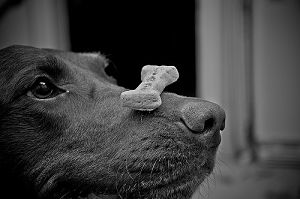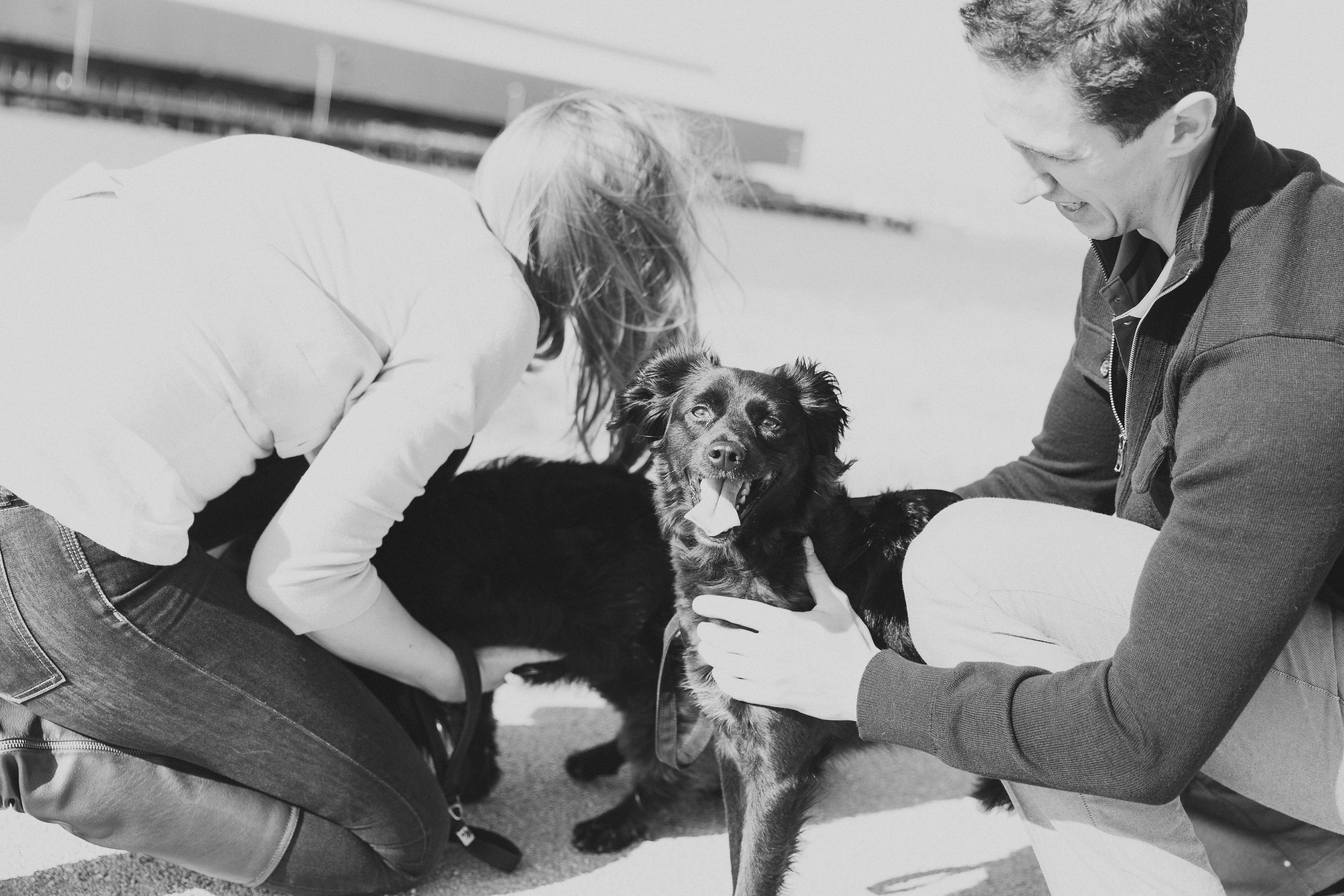Fortunately, there’s a solution. Interactive toys, or “puzzle” toys, are designed to be filled with small treats that encourage dogs to use their natural skill set. By working to earn their food reward, dogs exercise their minds and bodies, while channeling their energy into healthier outlets.
Kong brand toys, which are usually constructed of thick rubber and can be filled with small treats or soft food, like peanut butter or yogurt, offer many shapes and sizes to accommodate all dog breeds and sizes. They are generally durable enough for strong chewers, and can even be frozen for teething puppies.
“Pushover” toys are a little more complex, requiring dogs to move them around with their feet or noses to knock the treats out. They are usually a ball or cube shape, constructed of hard plastic, and can provide hours of exercise and mental stimulation.
“They are usually a ball or cube shape, constructed of hard plastic, and can provide hours of exercise and mental stimulation.”
When deciding to incorporate puzzle toys into your routine, it’s best to start slowly and give your dog plenty of encouragement. These toys can be frustrating and it’s important for your dog to “win” sometimes, in order to hold their interest and keep them playing. The treats should be pungent and enticing-not something they’re used to getting-and you can also help them do the work to strengthen the reward connection.
Keep in mind, however, that dogs shouldn’t be left unsupervised with puzzle toys, since frustration or lack of treats can trigger destruction behavior. Because there’s food involved, puzzle toys can also cause resource guarding among multiple dogs, so it’s vital to keep an eye on them during playtime. In addition, puzzle toys come in many different sizes and may have small parts, so be sure to choose toys that are appropriate for your dog’s size and strength.
Puzzle toys are an excellent source of enrichment and bonding for your dog, offering mental stimulation, physical exercise, and reward-based challenges that stave off boredom and keep your dog happy and healthy!

Does your pup have a favorite puzzle toy? Share it below!
